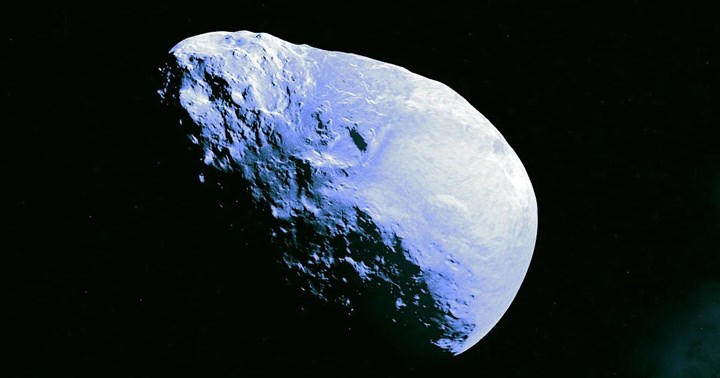|
Yeni keşif fizik kurallarını değiştiriyor: 5. bir kuvvet olabilir

-
-
Yer çekimi diye bir kuvvet yok.
-
Engelliyorum , ciddi yahut troll fark etmez.
-
6. his gibin yok ama var
artık nasıl bişiyse, bilmiyoruz ama kanıtlıyoruz
-
çekim kuvvetinin dışında karanlık maddenin itimi de var, galaksi kümelerini şekillendiren bir kuvvet.
-
Yer çekimi diye bir kuvvet yok.
< Bu ileti mobil sürüm kullanılarak atıldı > -
Gök itimi var dimi :))
-
Çok uzak mesafeden ise bunu ileride gök taşı savunmasında kullanabiliriz.
< Bu ileti iOS uygulamasından atıldı > -
Ne kadar bilgisiz cahil var diye araştırma yapmak için bilerek açıklamadım başta sen şortla gezerken biz diferansiyel denklemlerden rolativiteden ders veriyorduk çocuk.
youtube
Some viewers think that this video is wrong or I am a flat Earther or that this could only be true if the Earth is expanding (see below). It's 100% consisten...https://m.youtube.com/watch?v=nR9nE1TalZc&pp=ygUXaXMgZ3Jhdml0eSBhY2NlbGVyYXRpb24%3D
< Bu ileti mobil sürüm kullanılarak atıldı > -
Doğru söylüyor, işte kanıtı..  Şahan GökbakaryoutubeDünya Aslında Dönmüyor mu? - Cevizkıran - Dikkat Şahan Çıkabilirhttps://www.youtube.com/watch?v=X7qOAyDmCEI&ab_channel=%C5%9EahanG%C3%B6kbakar
Şahan GökbakaryoutubeDünya Aslında Dönmüyor mu? - Cevizkıran - Dikkat Şahan Çıkabilirhttps://www.youtube.com/watch?v=X7qOAyDmCEI&ab_channel=%C5%9EahanG%C3%B6kbakar
-
Bir deha daha aferim oğlum aferim cahillikle tam yol ileri. Ben bu halkı eğitecem ama. Kararlıyım. Kuvvet ve ivme farkını bile bilmiyorsunuz değil mi daha.
< Bu mesaj bu kişi tarafından değiştirildi Linux Super User -- 11 Ekim 2024; 14:53:33 >
< Bu ileti mobil sürüm kullanılarak atıldı > -
Kütle çekim(yer çekimi) kuvveti yok mu diyorsun yani sen şimdi? Doğru mu anladım?
-
relativistic mass, in the special theory of relativity, the mass that is assigned to a body in motion. In physical theories prior to special relativity, the momentum p and energy E assigned to a body of rest mass m0 and velocity v were given by the formulas p = m0v and E = E0 + m0v2/2, where the value of the “rest energy” E0 was undetermined. In special relativity, the relativistic mass is given by m = γm0, where γ = 1/Square root of√(1 − v2/c2) and c is the speed of light in a vacuum (299,792.458 km [186,282.397 miles] per second). Then the corresponding formulas for p and E, respectively, are p = mv and E = mc2. The relativistic mass m becomes infinite as the velocity of the body approaches the speed of light, so, even if large momentum and energy are arbitrarily supplied to a body, its velocity always remains less than c.
Kuvvet olarak yok uzay zaman kiriliminin oluşturduğu bir ivme olarak var
Einstein's equations
edit
Main articles: Einstein field equations and Mathematics of general relativity
Having formulated the relativistic, geometric version of the effects of gravity, the question of gravity's source remains. In Newtonian gravity, the source is mass. In special relativity, mass turns out to be part of a more general quantity called the energy–momentum tensor, which includes both energy and momentum densities as well as stress: pressure and shear.[40] Using the equivalence principle, this tensor is readily generalized to curved spacetime. Drawing further upon the analogy with geometric Newtonian gravity, it is natural to assume that the field equation for gravity relates this tensor and the Ricci tensor, which describes a particular class of tidal effects: the change in volume for a small cloud of test particles that are initially at rest, and then fall freely. In special relativity, conservation of energy–momentum corresponds to the statement that the energy–momentum tensor is divergence-free. This formula, too, is readily generalized to curved spacetime by replacing partial derivatives with their curved-manifold counterparts, covariant derivatives studied in differential geometry. With this additional condition—the covariant divergence of the energy–momentum tensor, and hence of whatever is on the other side of the equation, is zero—the simplest nontrivial set of equations are what are called Einstein's (field) equations:
Einstein's field equations
G
μ
ν
≡
R
μ
ν
−
1
2
R
g
μ
ν
=
κ
T
μ
ν
{\displaystyle G_{\mu \nu }\equiv R_{\mu \nu }-{\textstyle 1 \over 2}R\,g_{\mu \nu }=\kappa T_{\mu \nu }\,}
On the left-hand side is the Einstein tensor,
G
μ
ν
{\displaystyle G_{\mu \nu }}, which is symmetric and a specific divergence-free combination of the Ricci tensor
R
μ
ν
{\displaystyle R_{\mu \nu }} and the metric. In particular,
R
=
g
μ
ν
R
μ
ν
{\displaystyle R=g^{\mu \nu }R_{\mu \nu }}
is the curvature scalar. The Ricci tensor itself is related to the more general Riemann curvature tensor as
R
μ
ν
=
R
α
μ
α
ν
.
{\displaystyle R_{\mu \nu }={R^{\alpha }}_{\mu \alpha \nu }.}
On the right-hand side,
κ
{\displaystyle \kappa } is a constant and
T
μ
ν
{\displaystyle T_{\mu \nu }} is the energy–momentum tensor. All tensors are written in abstract index notation.[41] Matching the theory's prediction to observational results for planetary orbits or, equivalently, assuring that the weak-gravity, low-speed limit is Newtonian mechanics, the proportionality constant
κ
{\displaystyle \kappa } is found to be
κ
=
8
π
G
c
4
{\textstyle \kappa ={\frac {8\pi G}{c^{4}}}}, where
G
{\displaystyle G} is the Newtonian constant of gravitation and
c
{\displaystyle c} the speed of light in vacuum.[42] When there is no matter present, so that the energy–momentum tensor vanishes, the results are the vacuum Einstein equations,
R
μ
ν
=
0.
{\displaystyle R_{\mu \nu }=0.}
In general relativity, the world line of a particle free from all external, non-gravitational force is a particular type of geodesic in curved spacetime. In other words, a freely moving or falling particle always moves along a geodesic.
The geodesic equation is:
d
2
x
μ
d
s
2
+
Γ
μ
α
β
d
x
α
d
s
d
x
β
d
s
=
0
,
{\displaystyle {d^{2}x^{\mu } \over ds^{2}}+\Gamma ^{\mu }{}_{\alpha \beta }{dx^{\alpha } \over ds}{dx^{\beta } \over ds}=0,}
where
s
{\displaystyle s} is a scalar parameter of motion (e.g. the proper time), and
Γ
μ
α
β
{\displaystyle \Gamma ^{\mu }{}_{\alpha \beta }} are Christoffel symbols (sometimes called the affine connection coefficients or Levi-Civita connection coefficients) which is symmetric in the two lower indices. Greek indices may take the values: 0, 1, 2, 3 and the summation convention is used for repeated indices
α
{\displaystyle \alpha } and
β
{\displaystyle \beta }. The quantity on the left-hand-side of this equation is the acceleration of a particle, and so this equation is analogous to Newton's laws of motion which likewise provide formulae for the acceleration of a particle. This equation of motion employs the Einstein notation, meaning that repeated indices are summed (i.e. from zero to three). The Christoffel symbols are functions of the four spacetime coordinates, and so are independent of the velocity or acceleration or other characteristics of a test particle whose motion is described by the geodesic equation
< Bu mesaj bu kişi tarafından değiştirildi Linux Super User -- 11 Ekim 2024; 15:3:38 >
< Bu ileti mobil sürüm kullanılarak atıldı >
-
Ben ikna oldum..
Dünya dönmediği gibi yer cekimi de yalanmis..

< Bu ileti mobil sürüm kullanılarak atıldı > -
Bir güç var denirdi, 5 oldu.
-
dünya aslında düz dimi hocam. nasa falan hepsi birleşip yalan söylüyorlar insanlara
-
arkadaşım ıq kaç yukarda anlatmışım okumayı da mı bilmiyorsunuz bugün engellediğim 5. kişi.
relativistic mass, in the special theory of relativity, the mass that is assigned to a body in motion. In physical theories prior to special relativity, the momentum p and energy E assigned to a body of rest mass m0 and velocity v were given by the formulas p = m0v and E = E0 + m0v2/2, where the value of the “rest energy” E0 was undetermined. In special relativity, the relativistic mass is given by m = γm0, where γ = 1/Square root of√(1 − v2/c2) and c is the speed of light in a vacuum (299,792.458 km [186,282.397 miles] per second). Then the corresponding formulas for p and E, respectively, are p = mv and E = mc2. The relativistic mass m becomes infinite as the velocity of the body approaches the speed of light, so, even if large momentum and energy are arbitrarily supplied to a body, its velocity always remains less than c.
Kuvvet olarak yok uzay zaman kiriliminin oluşturduğu bir ivme olarak var
Einstein's equations
edit
Main articles: Einstein field equations and Mathematics of general relativity
Having formulated the relativistic, geometric version of the effects of gravity, the question of gravity's source remains. In Newtonian gravity, the source is mass. In special relativity, mass turns out to be part of a more general quantity called the energy–momentum tensor, which includes both energy and momentum densities as well as stress: pressure and shear.[40] Using the equivalence principle, this tensor is readily generalized to curved spacetime. Drawing further upon the analogy with geometric Newtonian gravity, it is natural to assume that the field equation for gravity relates this tensor and the Ricci tensor, which describes a particular class of tidal effects: the change in volume for a small cloud of test particles that are initially at rest, and then fall freely. In special relativity, conservation of energy–momentum corresponds to the statement that the energy–momentum tensor is divergence-free. This formula, too, is readily generalized to curved spacetime by replacing partial derivatives with their curved-manifold counterparts, covariant derivatives studied in differential geometry. With this additional condition—the covariant divergence of the energy–momentum tensor, and hence of whatever is on the other side of the equation, is zero—the simplest nontrivial set of equations are what are called Einstein's (field) equations:
Einstein's field equations
G
μ
ν
≡
R
μ
ν
−
1
2
R
g
μ
ν
=
κ
T
μ
ν
{\displaystyle G_{\mu \nu }\equiv R_{\mu \nu }-{\textstyle 1 \over 2}R\,g_{\mu \nu }=\kappa T_{\mu \nu }\,}
On the left-hand side is the Einstein tensor,
G
μ
ν
{\displaystyle G_{\mu \nu }}, which is symmetric and a specific divergence-free combination of the Ricci tensor
R
μ
ν
{\displaystyle R_{\mu \nu }} and the metric. In particular,
R
=
g
μ
ν
R
μ
ν
{\displaystyle R=g^{\mu \nu }R_{\mu \nu }}
is the curvature scalar. The Ricci tensor itself is related to the more general Riemann curvature tensor as
R
μ
ν
=
R
α
μ
α
ν
.
{\displaystyle R_{\mu \nu }={R^{\alpha }}_{\mu \alpha \nu }.}
On the right-hand side,
κ
{\displaystyle \kappa } is a constant and
T
μ
ν
{\displaystyle T_{\mu \nu }} is the energy–momentum tensor. All tensors are written in abstract index notation.[41] Matching the theory's prediction to observational results for planetary orbits or, equivalently, assuring that the weak-gravity, low-speed limit is Newtonian mechanics, the proportionality constant
κ
{\displaystyle \kappa } is found to be
κ
=
8
π
G
c
4
{\textstyle \kappa ={\frac {8\pi G}{c^{4}}}}, where
G
{\displaystyle G} is the Newtonian constant of gravitation and
c
{\displaystyle c} the speed of light in vacuum.[42] When there is no matter present, so that the energy–momentum tensor vanishes, the results are the vacuum Einstein equations,
R
μ
ν
=
0.
{\displaystyle R_{\mu \nu }=0.}
In general relativity, the world line of a particle free from all external, non-gravitational force is a particular type of geodesic in curved spacetime. In other words, a freely moving or falling particle always moves along a geodesic.
The geodesic equation is:
d
2
x
μ
d
s
2
+
Γ
μ
α
β
d
x
α
d
s
d
x
β
d
s
=
0
,
{\displaystyle {d^{2}x^{\mu } \over ds^{2}}+\Gamma ^{\mu }{}_{\alpha \beta }{dx^{\alpha } \over ds}{dx^{\beta } \over ds}=0,}
where
s
{\displaystyle s} is a scalar parameter of motion (e.g. the proper time), and
Γ
μ
α
β
{\displaystyle \Gamma ^{\mu }{}_{\alpha \beta }} are Christoffel symbols (sometimes called the affine connection coefficients or Levi-Civita connection coefficients) which is symmetric in the two lower indices. Greek indices may take the values: 0, 1, 2, 3 and the summation convention is used for repeated indices
α
{\displaystyle \alpha } and
β
{\displaystyle \beta }. The quantity on the left-hand-side of this equation is the acceleration of a particle, and so this equation is analogous to Newton's laws of motion which likewise provide formulae for the acceleration of a particle. This equation of motion employs the Einstein notation, meaning that repeated indices are summed (i.e. from zero to three). The Christoffel symbols are functions of the four spacetime coordinates, and so are independent of the velocity or acceleration or other characteristics of a test particle whose motion is described by the geodesic equation
< Bu mesaj bu kişi tarafından değiştirildi Linux Super User -- 11 Ekim 2024; 17:45:18 >
En Beğenilen Yanıtlar
|
Gök itimi var dimi :))
|
Bu mesaj IP'si ile atılan mesajları ara Bu kullanıcının son IP'si ile atılan mesajları ara Bu mesaj IP'si ile kullanıcı ara Bu kullanıcının son IP'si ile kullanıcı ara
KAPAT X






 Yeni Kayıt
Yeni Kayıt







 Konudaki Resimler
Konudaki Resimler






 kullanıcısına yanıt
kullanıcısına yanıt
 kullanıcısına yanıt
kullanıcısına yanıt

 Hızlı
Hızlı 



















